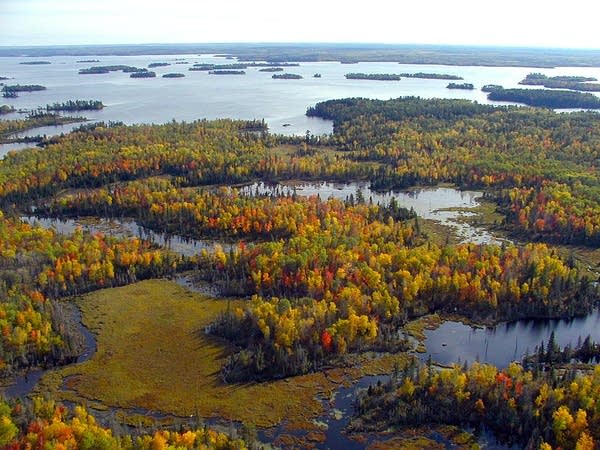Air cleanup effort launched in Boundary Waters area
Go Deeper.
Create an account or log in to save stories.
Like this?
Thanks for liking this story! We have added it to a list of your favorite stories.

Minnesota and other states are mobilizing to clean up the air in supposedly pristine areas like the Boundary Waters Canoe Area Wilderness and Voyageurs National Park.
Here's one way of thinking about it. On the clearest days in the Boundary Waters, you can see 120 miles. But on one-fifth of the days in any given year, you can only see 33 miles. That's haze getting in the way.
"Haze is caused by fine particulates, it's the same kind of particulate matter that's implicated in asthma, and when we have a high air quality index day," said Catherine Neuschler, who's in charge of the haze clean-up effort at the Minnesota Pollution Control Agency.
"Most of what's implicated in the haze problem just comes from the mixing of different pollutants in the atmosphere to form this fine particulate matter, which can travel long distances, so it really is a regional problem, a U.S.-wide problem."
Turn Up Your Support
MPR News helps you turn down the noise and build shared understanding. Turn up your support for this public resource and keep trusted journalism accessible to all.
Congress has ordered states to clean up the air in national parks and wilderness areas.
The pollution that causes the haze in the northern wilderness comes all over; from the Twin Cities, even from as far away as Illinois and Missouri. In fact, more than two-thirds of the pollution causing bad days up north comes from outside Minnesota, on winds from the south.
It's mostly sulfur dioxide -- SO2 -- and nitrogen oxides. The SO2 comes mostly from burning coal; the nitrogen can be from industry, or from the exhaust pipe of your car.

About half of Minnesota's share of this troublesome mix comes from the state as a whole; the other half comes from the six counties closest to the parks. In that nearby area, coal-fired power plants contribute half. Nearly half is from taconite plants and a tiny amount is from paper mills and other sources.
Electric companies are busy installing scrubbers and fabric filters, and improving combustion techniques. A lot of that work was already underway when the haze issue came up, but taconite companies are another story.
There's no off-the-shelf control technology for taconite furnaces, like there is for power plants.
"What you're doing is hoping you'll develop something that will work, and as hard as we try to develop technology; there aren't always breakthroughs," said Craig Pagel, director of the Iron Mining Association of Minnesota.
The MPCA plans to require the taconite companies to implement good combustion practices. That means adjusting their pellet furnaces to reduce pollution. They'll also have to install monitors that measure emissions continuously. After those are in place for a year, the agency will set a limit on emissions based on those good combustion practices.
All this work is getting pushed back because so many of the taconite plants have been shut down due to the poor economy.
The MPCA is also including planned new sources of pollution, like Essar Steel, Mesabi Nugget and proposed copper-nickel mines.
Meanwhile, the other states that contribute to haze in Minnesota's national parks are working on reducing their pollution, and Minnesota needs to reduce its contribution to haze in Isle Royal National Park, in Michigan.
It's a complicated and long-term project. And for a pollution-control effort, it's been unusually collaborative. The U.S. Forest Service and the National Park Service have been closely involved as the MPCA developed its plan; so have the power companies and taconite plants.
Environmental groups, like the Voyageurs National Park Association, are weighing in. Cory MacNulty, the director of the Association, said the plan would be stronger if the MPCA would require the taconite plants to test new pollution control technologies.
"I think it's more difficult for them, because they can get pushback from industry and the politicians," MacNulty said. "But I think they have ability to do that if they choose, and the Regional Haze State Implementation Plan is a good way for them to take a look at the taconite industry and try to push for some of these technologies to be tested."
She said the cleaner the air is up north, the cleaner it'll be where more people live.
The MPCA hopes to have its plan ready for approval by the federal Environmental Protection Agency by the end of this year.



